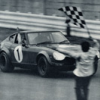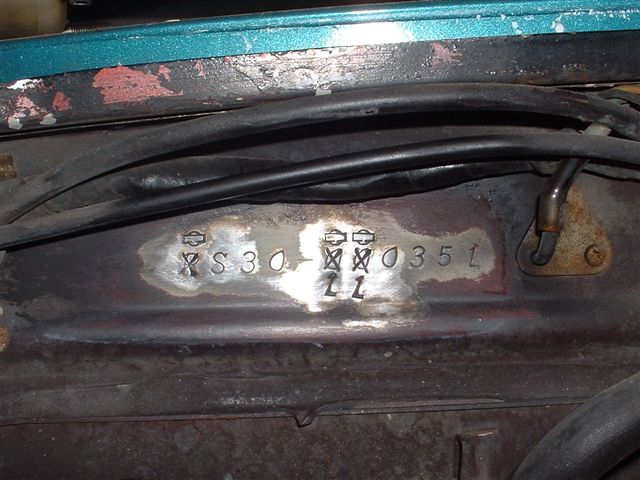Everything posted by HS30-H
-
Reproducing HeadLight Covers input needed from the community
How is it possible to make the correct profile (asymmetric 'U') channel with a waterjet? I still think you are not grasping the full detail of the parts in question. They sound - even look - simple, but they are complicated to make properly and require some quite expensive press tooling to replicate the original manufacturing method and- therefore - the original look.
-
Are these original to a 2/71 240Z?
Suggestion from 'A Certain Personality': How about calling it a 'vented type hatch' (as opposed to 'vented quarter') to make the difference clear? The difference being The Whole Point...
-
Front Wheel Bearings (Avoiding Made in Mainland China)
Why would I do that? I don't know anything about 'National Bearing'. However you, of course, must know something worthwhile about them (quality/metallurgy/fit/finish) in order to be urging us not to buy. So where's the data? Unless your problem with them is simply where they are made...?
-
Front Wheel Bearings (Avoiding Made in Mainland China)
What's the real point of this thread? Are we supposed to avoid 'Made In China' wheel bearings simply because they happen to have been made in China? I don't know about anyone else, but I try to buy parts based on QUALITY and AVAILABILITY. Whoever makes the best quality parts (as far as I can tell) gets my money. I should imagine most of the people who bought a 'Made in Japan' S30-series Z when it was new had roughly the same philosophy. If the particular 'Made in China' parts in question are poor quality/fit, then please show the evidence to support the claim. Likewise, if the 'Made in Brazil' parts are superior, then please demonstrate how...
-
Datsun-240z Vs Fairlady-z432
For example? Given the shortest possible time gap between any 1970 production-dated car and any 1972 production-dated car is just over 12 calendar months, what kind of scenario would you think made that possible? Somebody found a forgotten crate of parts behind the canteen door? My experience would be that there usually is some rhyme and reason to explain such perceived phenomena, and it is often the case that we - as civilians - are misunderstanding and misinterpreting what we see. I class it with the "left-over 240Z parts used on 260Zs" type comments...
-
Datsun-240z Vs Fairlady-z432
432 fuel filler pipe and cap was exactly the same as that on contemporary build L-gata engined models.
-
cool catalog from 1971
It's in good condition because it's a colour photocopy of an original...
-
1969 Fairlady Z for Sale
Sure. Why not? It could also be bought as a period-themed resto-mod project or any other scenario from mild to wild. It is a relatively rare surviving example of a 1970 Fairlady Z-L, and it appeals to certain people because of that. I'd say it is probably worth more than a similar condition north American market model of the same age. We need to be accurate here. A 'Fairlady 240Z' would be an HS30-S 'Fairlady 240Z', HS30 'Fairlady 240Z-L' or HS30-H 'Fairlady 240ZG' with an HS30-prefixed chassis number, produced roughly from September 1971 through August 1973. The car in question is not a '240Z'.
-
1969 Fairlady Z for Sale
Sorry, but with all due respect the US title and any customs paperwork are not reliable witnesses to the production date of this car. My own 1970 Fairlady Z-L was 'titled' as a "1976 Fairlady Turbo" when it was originally imported to the United Kingdom by a USAF pilot in 1979, as the British vehicle licensing agency simply didn't know what they were dealing with... 'S30' prefixed chassis numbers produced in year 1969 ran from 'S30-00001' through 'S30-00953'. For 1970 year production the range was 'S30-00954' through 'S30-04330' and 'S30-04501' through 'S30-04504' (note the 171 car gap between '04330' and '04501'). This is not "Model Year" or 'Series', it is manufacturing date. Alan T.
-
1969 Fairlady Z for Sale
The hand-written kanji next to the big '69' on the warranty booklet says 'Nen Shiki'. A rough translation would be '69 year style'. This does not mean the car was actually built in 1969, and I would not place too much emphasis on it. It has as much relevance as the 'Series One' and 'Series Two' type comments in the grand scheme of things.. I'd also have to say that if someone made a purchase order for a car in 1969, and had to wait the best part of ten months for it to be delivered, then it must have been a pretty long queue that they were at the back of... No, it's not a purchase order it's just a three year new car warranty booklet. Look, there's no chance of this being a 1969 build year car. We know enough about these cars to confirm that it was built in the second half of 1970, and persisting with the romantic but nevertheless mistaken idea that it was built in 1969 is going to hinder the sale not aid it. It's going to be a bone of contention in the kind of uneducated discourse you often see on the likes of Bring A Trailer, and it is a distraction from the truth of the car itself. Better to accept it is a 1970 build year, and a rare survivor of the type with a lot of potential for a new owner to add value by putting some work into it.
-
1969 Fairlady Z for Sale
"Appraised" by whom? I can only conclude that this person did not know what they were looking at. As stated above, I have a lower chassis numbered Fairlady Z-L myself and it was made in the second half of 1970. Nissan Shatai's production records and the records of the Japanese motor vehicle licensing agency contradict the claim that your car was built in 1969. If you look closely at all the manufacturing date codes and quality control stamps on the componentry of the car they will show a majority of June/July/August/September 1970 dates. And here's no "numbers matching" in the accepted sense for these cars, as the chassis tags on Japanese market cars did not record the original engine number in the way that north American market cars did. Sorry, but it's a 1970 car. You'll put yourself in a stronger position regarding the sale if you embrace that fact. Good luck. Alan T.
-
1969 Fairlady Z for Sale
Well spotted, Mike. The page with the Showa dates in the wallet with the owners manual is the dealer warranty, and it shows the 'Shatai Bango' (body/chassis number) as '03814' and type as 'S30', so it is 'S30-03814', a 'Nissan Fairlady Z-L' built around July 1970. Japanese market cars didn't have door jamb tags, or dash-mounted chassis number tags either. I have a 1970 Fairlady Z-L too. It has the chassis number 'S30-03761', so just 53 apart in the same numbering sequence. The "Series 2 body with Series 1 hatch" type comments are fairly common when people look at early Japanese models. They are often being fooled by the shape and style of the solid, non-vented Japanese market rear quarter emblems. They were round in shape, non-vented and had a big letter 'Z' in them, so they get mistaken for the generic vented "series 2" quarter emblems shared by all models in all markets:
-
Oldest Automatic on the road?
I think it would certainly have been the JATCO 3N71A, as this was already being fitted and sold in the Japanese market in C10-series Skylines and other models by the end of 1968/early 1969. By the time of the 'Kaku U' north American tour it would have been a bit late (and fairly pointless) for them to have anything other than the 3N71A in one of the cars. Good story regarding your auto-equipped 510. Must have been a pretty big leap of faith in those days to buy such a car with the great distances between proper servicing dealers. I hope your loyalty was rewarded!
-
Oldest Automatic on the road?
As 26th-Z pointed out, the subject of Automatic Transmission-equipped S30-series Zs - when framed by terms such as "earliest" and "oldest on the road" - has to take into account that Auto-equipped Zs were available in Japan much earlier than they were in north America. Having said that, at least one of the 'Kaku U' north American test/dealer publicity run cars from 1969 was Auto trans equipped. Not a true production car, but it did have a chassis number. The 3N71A transmission was made by JATCO (Japan Automatic Transmission Company), a joint enterprise by several companies under the BW patents..
- What engine bay parts are yellow-cad plated?
- What engine bay parts are yellow-cad plated?
-
Factory initialed mistake?
-
build date question
You're quite likely the only person who thinks he knows the exact day on which his car was made...
-
Datsun-240z Vs Fairlady-z432
It's the ZG-specific towing bracket, as Kats pointed out previously...
-
Zedyone_kenobi's Nightmare
Well done. Keep up the good work.
-
Zedyone_kenobi's Nightmare
Turning his "Chinese Junk" slogan into his forum signature was a poor choice, in my opinion. It verged on politicking, and sometimes came off as a bit of a xenophobic rant. People should be free to buy what they want, and personally I don't care where things come from as long as they are well designed, well made and don't rip anybody off. And 'we' were copying China before China copied 'us'. When you think about it, this forum probably would not exist if Blue's type of sensibilities had been dominant 46 years ago. Does "Don't buy Japanese junk" ring a bell...?
-
pocket in 240z floor pan
The floor-pan 'pockets' are nothing to do with any Factory roll bar/'safety bar'/cage or related structure.
-
Interview with Yuri Kageyama about Yutaka Katayama
And just like so much written and spoken about Yutaka Katayama, it has a mistake or misapprehension in every sentence.
-
F*** the Internet
Tell him, not me. He's the one using Imperial.
-
F*** the Internet
I had to temporarily dumb myself down in order to realise that "visually appeared" should be "visually impaired"... Obviously that post was Made In China. So, Blue had more than 4 inches. Who knew?







